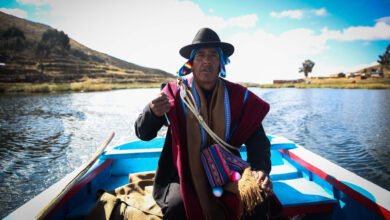Circular Economy and Sustainable Fashion: The New Direction of the Textile Sector in Latin America?
On May 6 in Santiago de Chile, a Meeting was held Between Representatives of the Latin American Textile and Fashion Sector with the aim of Sharing experiences on Sustainability and Circular Economy.

Photo: Pexels
LatinAmerican Post | Daniel Vergara García
Listen to this article
Leer en español: Economía circular y moda sostenible: ¿El nuevo rumbo del sector textil en Latinoamérica?
In this meeting, which brought together corporations, companies, communities and government and international entities with a presence in Latin America, they discussed the urgency and the need to build an agenda that seeks to include sustainability in the fashion system in Latin America.
At the regional level, the most important points discussed in this event are found both in the use of sustainable technologies for cotton planting and harvesting, and in the creation of strategic alliances that allow commercialization in more inclusive markets. Likewise, it was encouraged that the fashion and footwear system be able to promote different social innovation projects that promote greater efficiency in value chains and collaborate with the creation of jobs, inclusion and the development of capacities that allow both farmers and companies better wages and working conditions.
The event was organized by the Global Compact Network (Chile), which is the largest business sustainability initiative in the world, currently has more than 16,000 companies and corporations that join forces to contribute to the 2030 sustainable development goals. Thus, the +Algodón project together with the United Nations Economic Commission for Europe (UNECE) and the FAO Regional Office for Latin America and the Caribbean supported the organization of this dialogue.
What is the circular economy?
According to the Foundation for the Circular Economy: "It is an economic concept that is interrelated with sustainability, and whose objective is that the value of products, materials and resources (water, energy,…) are maintained in the economy during the as long as possible and that the generation of waste is minimized. It is about implementing a new economy based on the principle of "closing the life cycle" of products, services, waste, materials, water and energy".
We recommend you read: 3 keys to get started in circular fashion
Why circular economy in fashion?
Greenpeace Mexico affirmed that the region's textile industry must commit to confronting the environmental problems that fashion is generating. For example, the phenomenon of Fast Fashion, which is the mass production of clothing collections at cheap prices and low quality, is affecting the environment in various ways. The environmental NGO affirms that the production of clothing represents 10% of CO2 emissions globally, and also states that washing clothes implies that more than 500,000 tons of microplastics reach the oceans in one year. Additionally, if we talk about land and air pollution, the organization says that around 73% of the clothing produced annually ends up in landfills or being incinerated .
Regarding the implications that fashion has in the human and environmental spheres, Margarita Ducci, Director of the Global Compact Network Chile (UN), stated in an FAO press release that: “This dialogue was very inspiring for Chilean companies, knowing the work carried out in Latin America for the traceability of clothing and footwear products, in a collaborative alliance with international entities and with the participation of communities that play an invaluable role in adding value throughout the chain and reaching a more conscious and sensitized consumer regarding sustainable products, at such a hard time for humanity, with an environmental and health crisis of enormous magnitude”.
Although most of the actors who participated in the event came from Colombia, Chile and Peru, it is expected that for future meetings that are underway, other institutions and entities from the fashion and footwear sector in Latin America will join these discussions. and the creation of new strategic support networks and regional cooperation focused on textile sustainability.



